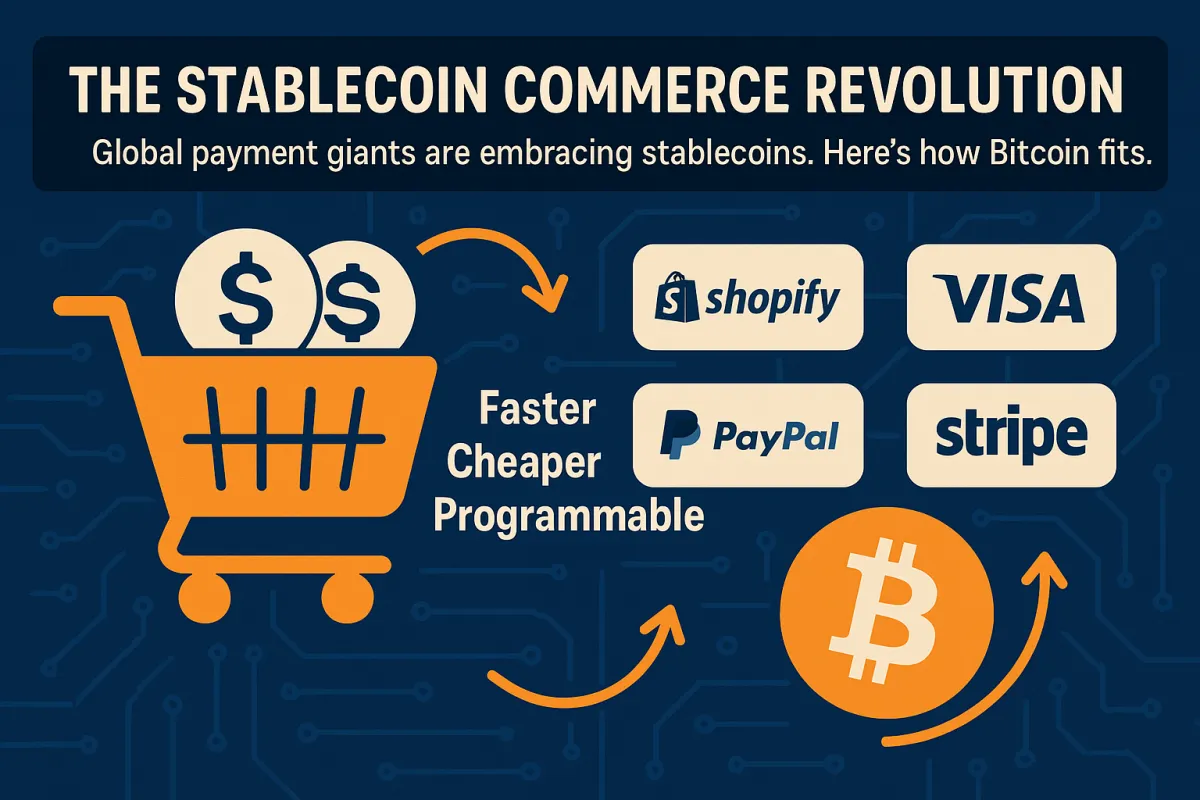
From Checkout to Crypto: How Stablecoins Are Quietly Powering the Next Payment Revolution
While the Bitcoin spotlight burns bright, a quieter shift is happening just beneath the surface—the stablecoin integration era has begun.
Retailers, banks, fintech platforms, and payment giants are beginning to embrace regulated, fiat-backed stablecoins as a faster, cheaper, programmable alternative to legacy payment rails. And with the passage of the GENIUS Act, this once-speculative sector now has the regulatory green light to go mainstream.
The stablecoin story is no longer about trading pairs.
It’s about transforming how money moves in the real world.
Why Stablecoins Work Where Cards and ACH Don’t
Traditional payments are slow, expensive, and siloed:
ACH transfers take days
International wires are riddled with fees
Card networks charge 2–3% per transaction
Settlement happens only during banking hours
Enter stablecoins like USDC, PYUSD, and FDUSD:
24/7 global settlement
Finality in seconds
Tiny fees (fractions of a cent)
Programmable for auto-payments, refunds, royalties, etc.
Now, thanks to the GENIUS Act’s licensing framework, stablecoins have the regulatory trust needed to go from “crypto curious” to Wall Street and Walmart-ready.
Who’s Leading the Charge?
Some of the biggest names in payments and commerce are quietly deploying stablecoin infrastructure:
Visa & Mastercard: Both are piloting USDC-based settlements with merchants and banks
Shopify: Now offers stablecoin checkout via Coinbase Commerce
Stripe: Working on on-chain payout rails using regulated stablecoins
PayPal (PYUSD): Launching its own stablecoin, already supported in Venmo and select merchant portals
JPMorgan: Testing tokenized deposit dollars on blockchain rails for instant settlements
These are not crypto-native plays. These are the pipes of traditional finance being rebuilt from the inside—with stablecoins as the lubricant.
How This Helps Bitcoin
Wait… isn’t this just centralization 2.0?
It’s true that stablecoins are centralized by nature. But their rise doesn’t threaten Bitcoin—it supports it.
Here’s how:
Better on-ramps: Regulated stablecoins make it easier for users to move from fiat to Bitcoin
Global liquidity: Bitcoin pairs with stablecoins dominate global crypto volume
Merchant bridges: A store might not accept BTC directly—but stablecoin integration keeps the door open
Programmable commerce: Bitcoin can remain the reserve while stablecoins handle day-to-day payments
Think of stablecoins as the cash in your wallet—and Bitcoin as the vault under your floorboards.
Stablecoins Aren’t the Goal—They’re the Gateway
Despite their growth, stablecoins are still tethered to fiat. That means:
They’re still exposed to inflation
They still require trust in issuers and governments
They can be frozen or censored
Their supply can be expanded or manipulated
Bitcoin solves those problems. But stablecoins solve the friction between here and there.
As people get comfortable with digital dollars, they’ll start asking better questions:
“If this can move instantly, why can’t it be inflation-proof?”
“Why does someone else get to freeze it?”
“What if I want savings, not just spending?”
The answer to all those questions will be: Bitcoin.
What to Watch For Next
As GENIUS-regulated stablecoins take off, expect:
More banks issuing their own branded tokens
Governments using stablecoins to deliver aid or subsidies
Central banks “competing” with private stablecoins via CBDCs
Bitcoin becoming the savings layer underneath all of it
The multi-layered money system is being built right now:
Layer 1: Bitcoin = base money
Layer 2: Stablecoins = digital cash
Layer 3: Fintech and commerce apps = access layer
Final Thoughts
Stablecoins won’t replace Bitcoin. They’re the bridge that leads people to it.
By anchoring commerce in digital dollars, they open the door to a global, borderless, programmable economy. But for that economy to be sound, it needs something stronger than fiat at its core.
That’s where Bitcoin comes in.
Want to master the layers of the new financial system? Get simple, powerful education at BullishBTC.com. Courses, guides, articles, and tools—designed for the next chapter of money.



